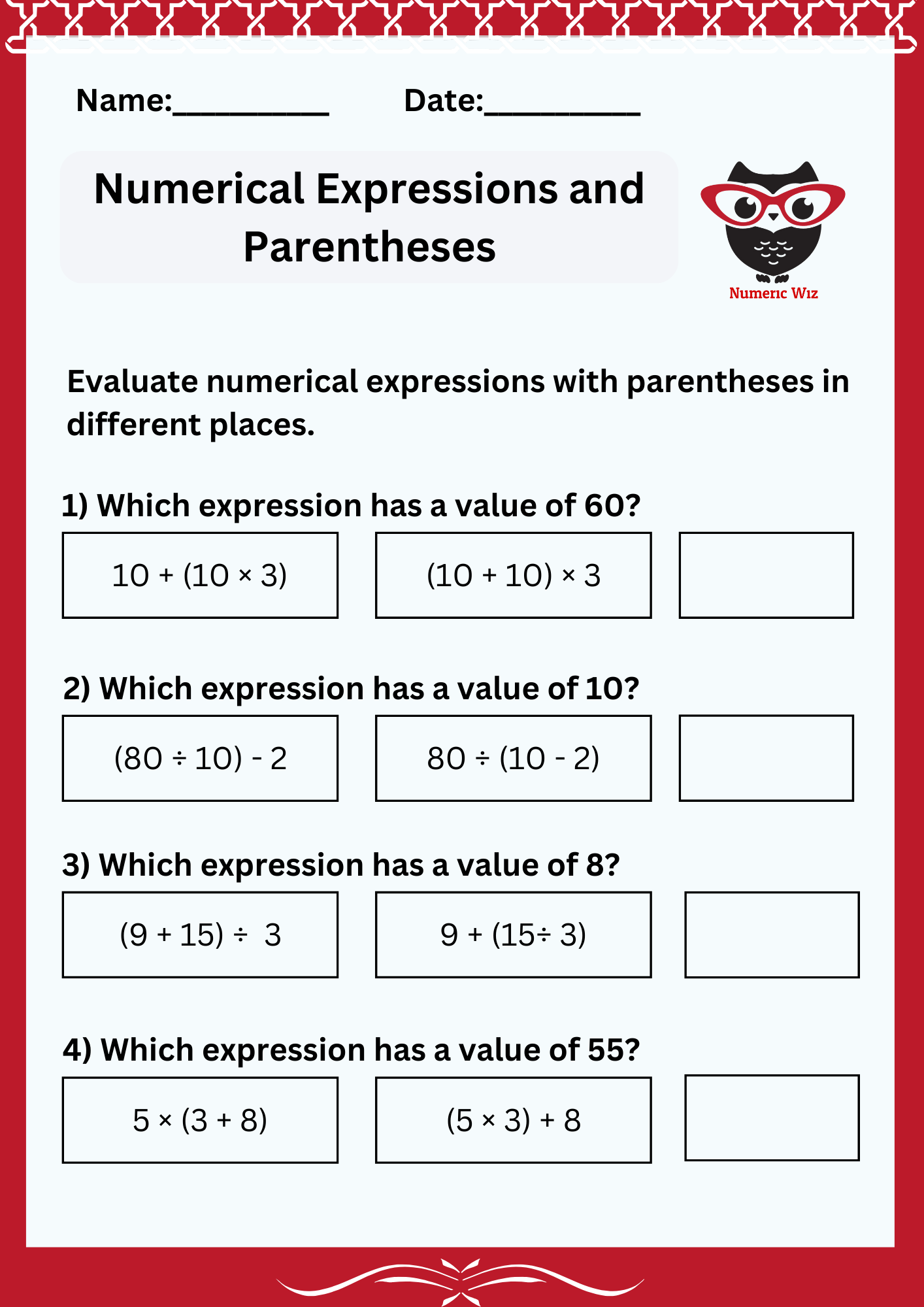These outcomes ensure that students grasp how and why to use grouping symbols in math.

In math, numerical expressions are like sentences made up of numbers and operations (like addition, subtraction, multiplication, and division). Sometimes, we use special symbols like parentheses ( ), brackets [ ], or braces { } to tell us which parts of the expression we should calculate first. These symbols help organize our work and make sure everyone solves the problem the same way.
Let’s say we have the expression:
5 + (3 × 4)
Without parentheses, you might think to add 5 and 3 first, but because of the parentheses, we do the 3 × 4 first, then add the 5.
So, 5 + (3 × 4) = 17.
Here’s an expression with both parentheses and brackets:
[5 + (2 × 3)] + 4
First, solve what’s inside the parentheses, then solve what’s inside the brackets.
So, [5 + (2 × 3)] + 4 = 15.
Using parentheses, brackets, and braces helps us follow the Order of Operations (PEMDAS: Parentheses, Exponents, Multiplication and Division, Addition and Subtraction). They make sure we all solve the expression the same way and avoid mistakes.
Let's practice and evaluate together, solving expressions step by step using parentheses, brackets, and braces!
For a limited time
